Crypto HODL Strategy Checker
Answer the following questions about your current crypto HODL approach to identify potential risks and improvements.
Common Mistakes Identified:
Better Practices to Adopt:
If you’ve ever shouted “HODL!” during a crypto dip, you’re not alone. The promise of sky‑high gains by simply holding can feel irresistible, but the reality is messier. Below we break down the most frequent HODL mistakes that turn a promising long‑term plan into a costly lesson, and show exactly how to sidestep them.
1. Assuming Holding Guarantees Profit
HODL is a strategy that means “hold on for dear life” - keep your crypto assets through ups and downs. The trap is treating it as a magic bullet. No asset, even the most established, ensures price appreciation. Markets can stay flat for years or even go negative if fundamentals shift.
2. Picking the Wrong Coins
Bitcoin and Ethereum are often called “blue‑chip” crypto because of their large networks and developer ecosystems. However, many new HODLers load up on low‑cap tokens based on hype alone. Without strong use‑cases or active development, those tokens can melt away, dragging your portfolio down.
3. Ignoring Tax Implications
In most jurisdictions, holding an asset for more than a year qualifies for a lower Long‑Term Capital Gains Tax rate. Failing to track holding periods or to plan tax‑efficient exits can bite hard when you finally sell. Some investors even overlook that a hard‑fork or airdrop can trigger taxable events.
4. Treating Market Volatility as a Reason to Never Adjust
Market Volatility is built into crypto. The mistake isn’t the volatility itself, but using it as an excuse to avoid any portfolio hygiene. Ignoring rebalancing means a surge in Bitcoin could drown out the upside of emerging projects, skewing risk exposure.
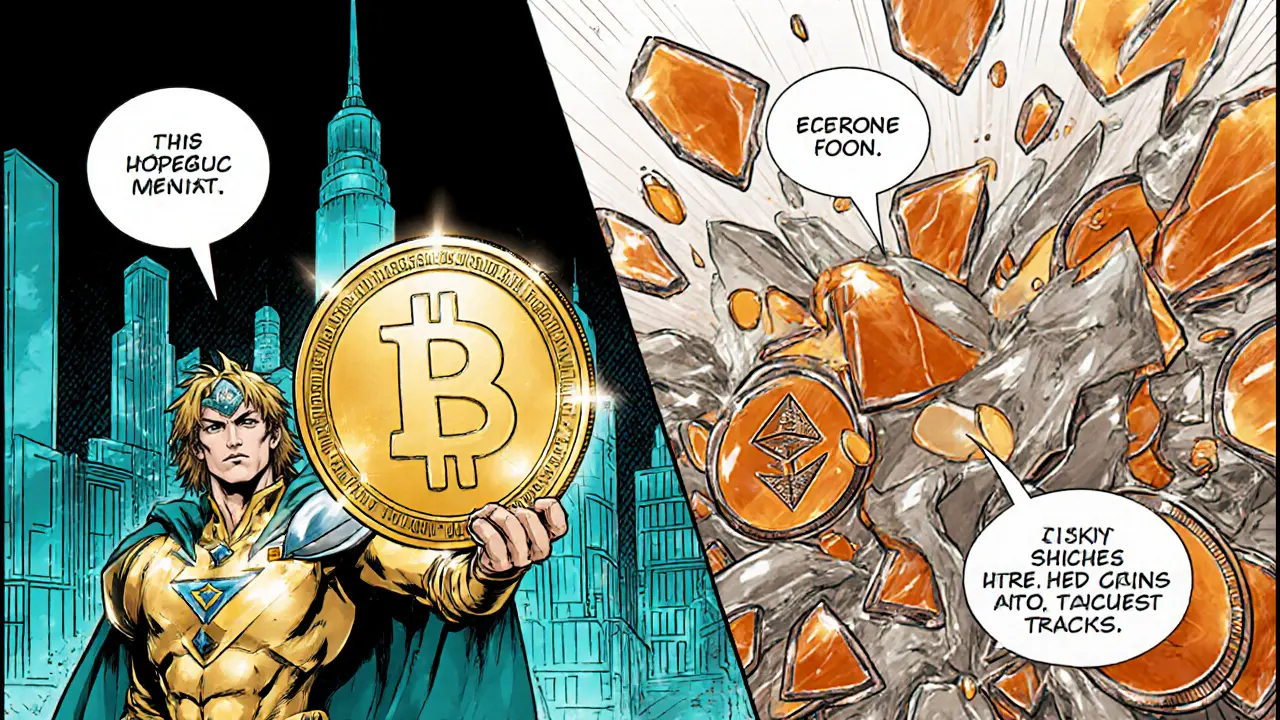
5. Skipping Rebalancing and Portfolio Review
Rebalancing is the process of adjusting holdings to match a target allocation. Without periodic checks, a 70/30 Bitcoin‑to‑Ethereum split can drift to 90/10 after a bull run, leaving you over‑exposed. A simple quarterly review can lock in gains and keep risk in check.
6. Letting Community Pressure Override Personal Goals
Community Pressure from crypto forums, Reddit threads, and Twitter hype often chant “HODL!” even when a project’s fundamentals crumble. Following the crowd can lead you to hold a dead coin far past the point where it matches your financial plan.
7. Overlooking Psychological Biases
Psychological Biases such as loss aversion, confirmation bias, and the sunk‑cost fallacy are powerful forces. When the price slumps, many HODLers double‑down simply because they don’t want to admit a mistake. Recognizing these biases helps you stay rational.
8. Forgetting to Secure Private Keys
Holding means you own the asset. If you store coins on an exchange and the platform is hacked, your holdings vanish. Using hardware wallets or secure seed‑phrase backups is essential.
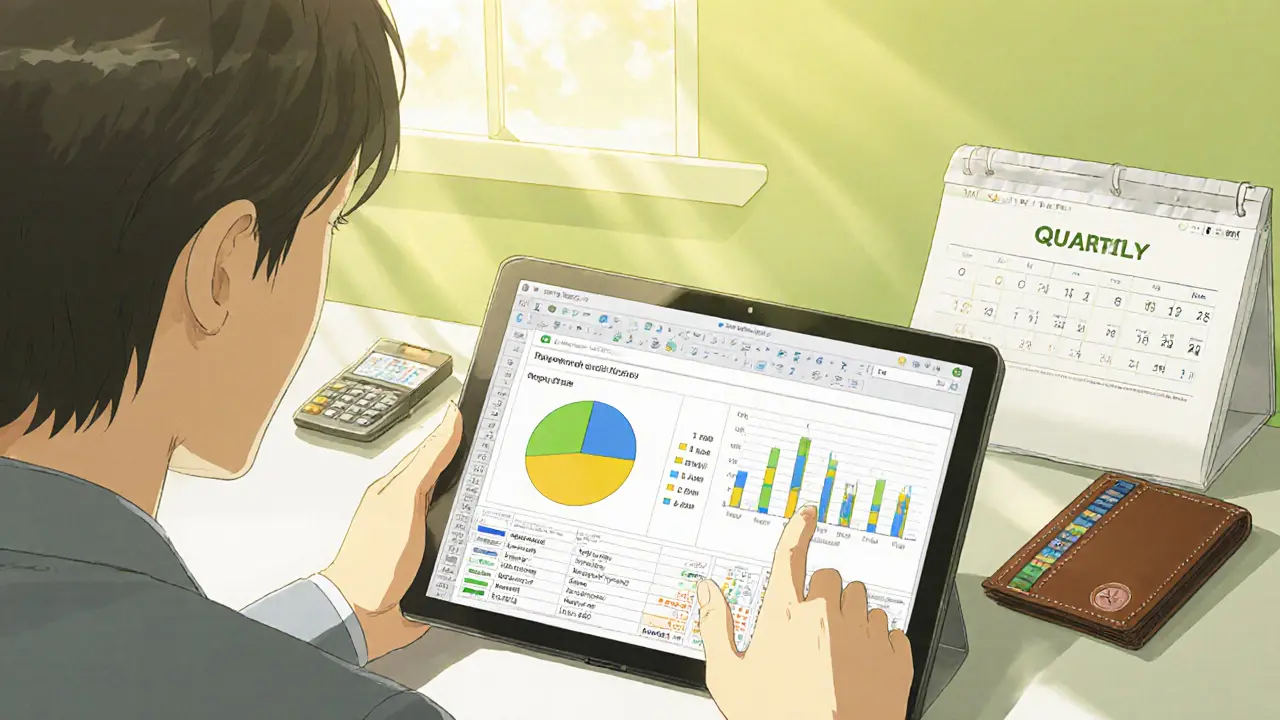
Practical Checklist to Strengthen Your HODL Strategy
- Choose assets with clear utility and active development (e.g., Bitcoin, Ethereum, Layer‑2 solutions).
- Document purchase dates to calculate long‑term vs short‑term holding periods.
- Set a target allocation (e.g., 60% Bitcoin, 30% Ethereum, 10% altcoins) and rebalance quarterly.
- Maintain a secure cold‑storage solution for the majority of your holdings.
- Create a personal exit plan: define price targets or life‑event triggers for partial sales.
- Log emotional responses to major market moves and review them monthly.
Comparison: Common Mistake vs Better Approach
| Typical Mistake | Better Practice |
|---|---|
| Buy any trending coin without research | Vet projects: tech roadmap, developer activity, network security |
| Ignore tax holding periods | Track acquisition dates; plan sales to maximize long‑term rates |
| Never rebalance | Quarterly review; adjust to target allocation |
| Follow every “HODL!” post | Align holdings with personal risk tolerance and goals |
| Store all coins on exchanges | Use hardware wallets for long‑term storage; keep only a small amount hot |
Next Steps: Building a Resilient HODL Plan
Start by writing down three concrete goals for your crypto portfolio - retirement, a house down‑payment, or a financial safety net. Match each goal to a time horizon and pick assets that fit the horizon. Then set up a simple spreadsheet to log purchases, dates, and current values. Schedule a calendar reminder for a quarterly review and stick to it.
Remember, HODLing isn’t a set‑and‑forget button. It’s a disciplined framework that blends long‑term conviction with periodic smart adjustments. By sidestepping the pitfalls above, you turn “hold on for dear life” into a purposeful, profit‑generating strategy.
Frequently Asked Questions
Is HODLing a good strategy for beginners?
It can be, provided the beginner picks well‑established assets, understands tax rules, and commits to occasional portfolio reviews. Starting with Bitcoin or Ethereum reduces the risk of backing a failed project.
How often should I rebalance my crypto holdings?
A quarterly cadence works for most investors. If a single asset moves more than 20% of your target allocation, consider rebalancing sooner.
Can I avoid all taxes by holding crypto for more than a year?
Holding longer usually qualifies you for lower long‑term capital gains rates, but you still owe tax on any realized gains. Some countries also tax crypto as income when you receive it, regardless of holding period.
What’s the safest way to store my HODL assets?
Cold storage on a hardware wallet (e.g., Ledger, Trezor) with the seed phrase kept offline is the gold standard. Keep only a modest amount on an exchange for trading if needed.
Should I ever sell a coin I’m HODLing?
Yes, if the coin’s fundamentals deteriorate, if you need cash for a personal goal, or if a strategic reallocation improves your risk profile. Selling isn’t a betrayal of HODL; it’s smart portfolio management.


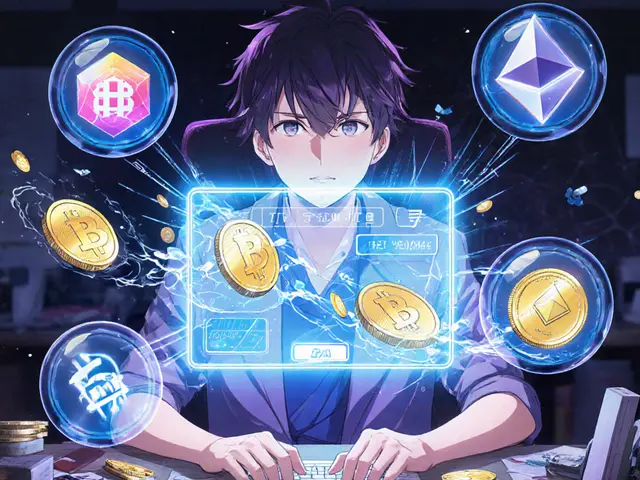

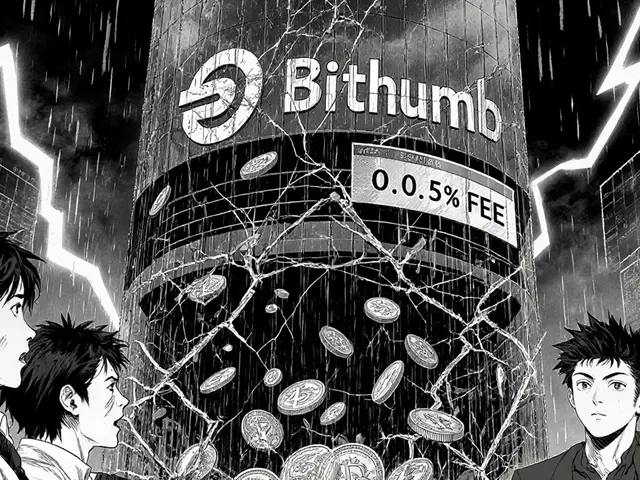
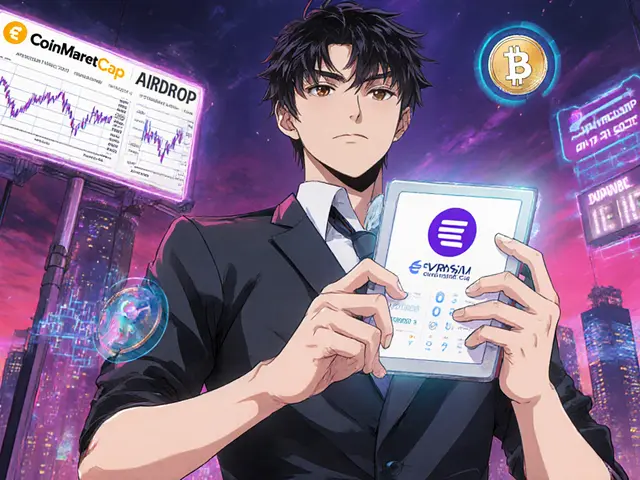

Eva Lee
May 28, 2025 AT 08:45Yo, let’s cut through the noise and talk risk‑adjusted alpha when you’re HODLing. If you’re only tracking price ladders without a proper exposure‑beta matrix, you’ll get sandbagged by volatility decay. The core metric you should be monitoring is the Sharpe‑adjusted holding period, not just raw ROI. Also, make sure your cold‑storage latency is under 1 ms to avoid slippage on withdrawal spikes – the network’s block propagation time can eat your returns faster than a rug‑pull. Lastly, don’t forget to hedge with stablecoin futures; otherwise you’re exposed to systemic DeFi liquidity crunches that aren’t evident in the price chart.
Patrick MANCLIÈRE
May 29, 2025 AT 13:55Great points, Eva! To add a cultural spin, many European investors favor a diversified basket that includes both Bitcoin and promising Layer‑2 solutions. A practical tip: set up a quarterly review calendar and jot down any macro‑economic shifts, like regulatory news in the EU, that could impact your tax strategy. Keeping a spreadsheet with acquisition dates and cost basis will make long‑term capital gains calculations painless. Also, consider allocating a small % to staking to generate passive yield while you hold the core assets.
Ciaran Byrne
May 30, 2025 AT 19:05Spot on. Concisely, track dates, rebalance quarterly, and store the bulk offline.
Greer Pitts
June 1, 2025 AT 00:16Totally feel ya, Ciaran. I always keep a simple Google Sheet – I’m kinda bad with spreadsheets but it works. I also keep a tiny amount on Binance for quick swaps, but the rest is on a Ledger Nano. Gotta stay flexible but safe!
Lurline Wiese
June 2, 2025 AT 05:26OMG, this is like the drama of a season finale! Imagine holding a coin that suddenly spikes 300% and you missed the exit because you were too “loyal.” The heartbreak is real, but the lesson? Set stop‑loss alerts and have a contingency plan. Otherwise, you’ll be left crying into your coffee while the market moves on without you.
Adarsh Menon
June 3, 2025 AT 10:36Wow so deep bro
Tyrone Tubero
June 4, 2025 AT 15:46Listen, while you’re busy melodramatizing, remember that the crypto ecosystem rewards strategic foresight. If you ignore data‑driven rebalancing, you’re basically gambling with your future. Let’s elevate the conversation from meme‑level panic to polished portfolio stewardship.
Brooklyn O'Neill
June 5, 2025 AT 20:56I totally agree with Tyrone-let’s keep it constructive and supportive. It’s all about sharing tools that actually work for the community, like using hardware wallets and setting clear exit triggers. We’re all in this together!
Matt Nguyen
June 7, 2025 AT 02:06While the mainstream discourse glorifies “HODL” as a simplistic mantra, one must consider the covert machinations of exchange custodians. The centralized nodes maintain a latent ability to freeze assets under the pretense of compliance-an unlikely scenario for the average holder, yet a real risk. Moreover, the hidden liquidity pools in DeFi often operate under opaque governance structures, susceptible to sudden contract upgrades that can nullify your holdings. It is therefore prudent to diversify storage vectors and remain vigilant of any policy shifts that could affect access to your crypto assets.
Cynthia Rice
June 8, 2025 AT 07:16Philosophically, the act of holding reflects our relationship with time and uncertainty.
Scott McReynolds
June 9, 2025 AT 12:26Alright, let me unpack this with some optimism and a healthy dose of philosophical perspective. First, the concept of HODL is not a static decision; it’s a dynamic equilibrium between conviction and adaptability. When you set a long‑term horizon, you’re essentially betting on the maturation of the underlying technology, and that belief should be reinforced by continual learning. Second, tax implications are not just bureaucratic obstacles; they’re opportunities to strategically plan exits, harvest losses, and reallocate capital in a tax‑efficient manner-think of it as a financial choreography rather than a punitive chore. Third, diversification isn’t merely about spreading risk; it’s about curating a portfolio of complementary narratives, each with its own utility, governance, and community traction, which together create a resilient ecosystem that can withstand sector‑wide shocks. Fourth, security practices evolve alongside threats; using a hardware wallet is akin to safeguarding a physical vault, but you also need to rotate seed phrases, employ multi‑signature schemes, and stay abreast of firmware updates to fortify against emerging attack vectors. Fifth, psychological biases-loss aversion, confirmation bias, sunk‑cost fallacy-are the silent saboteurs of rational decision‑making. By maintaining a reflective journal that catalogs emotional responses to market swings, you can identify patterns and counteract them with data‑driven rebalancing actions. Sixth, community influence can be powerful, yet it should never eclipse personal risk tolerance; the echo chambers of Reddit or Twitter often amplify hype, and the wise investor learns to filter noise through personal metrics. Seventh, setting clear exit criteria-whether they be price targets, fundamental milestones, or life‑event triggers-transforms HODL from a vague hope into a measurable strategy. Eighth, regular quarterly reviews act as a feedback loop, allowing you to adjust allocations, reassess fundamentals, and incorporate new information without succumbing to panic. Ninth, the macro‑economic environment-interest rates, regulatory developments, institutional adoption-frames the broader context in which your assets operate, so staying informed at that level is essential. Tenth, finally, the act of holding can be a disciplined practice that builds patience, resilience, and a deeper appreciation for the transformative potential of decentralized technologies. By integrating these practices, HODL becomes less about blind endurance and more about an intentional, evolving plan that aligns with both personal financial goals and the broader trajectory of crypto innovation.
John Corey Turner
June 10, 2025 AT 17:37Indeed, Scott’s roadmap reads like a manifesto for the modern crypto steward. I’d add that the art of narrative‑driven investing-spotting projects with compelling use‑cases and community governance-can amplify the alpha you chase. Also, don’t forget the utility of on‑chain analytics tools to validate activity beyond surface‑level price charts.
Kimberly Kempken
June 11, 2025 AT 22:47Listen, all this feel‑good fluff ignores the brutal reality: most of these “best practices” are just hype sold by consultants who want your fees. The market is a zero‑sum game; if you’re not constantly questioning the status quo and willing to call out the bullsh*t, you’ll get left behind. Stop preaching safe‑play and start demanding transparency from dev teams.
Carthach Ó Maonaigh
June 13, 2025 AT 03:57Whoa, dropping the mic there, Kimberly. But hey, let’s keep it real – the data shows that over‑diversification can dilute upside. So maybe a balanced core with a dash of high‑risk plays is the sweet spot. Just don’t get too comfortable.